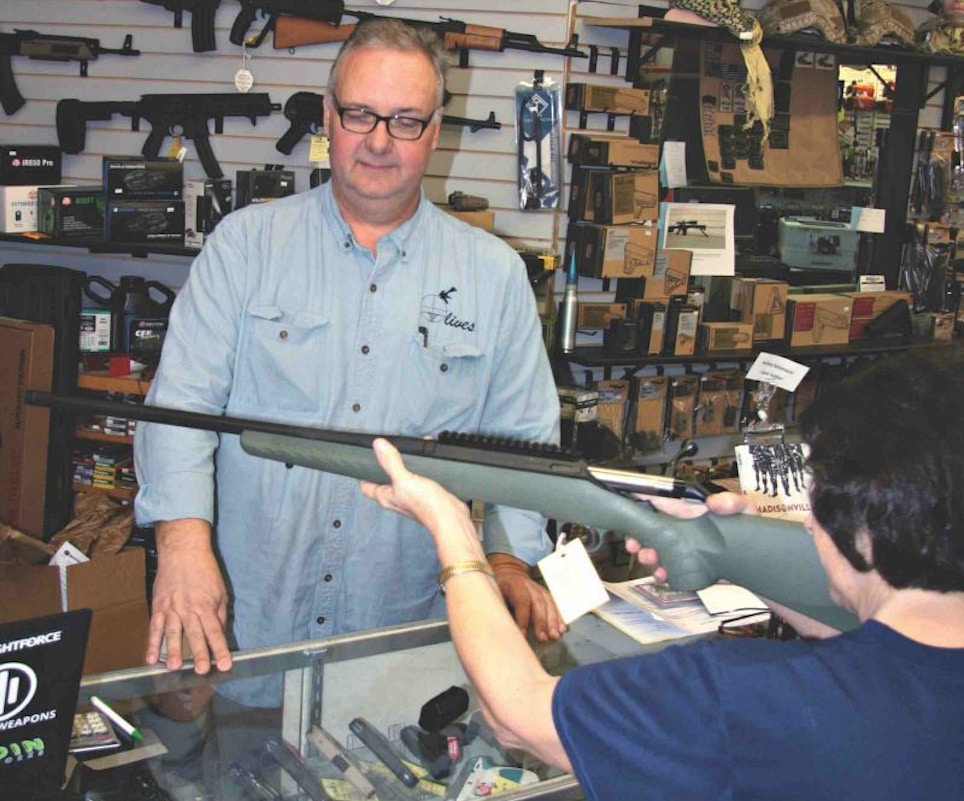
The two most important concepts in retailing — need and want — are in play here. Each customer, if pressed, will divulge what he or she thinks they need, as well as what they want. Creative listening can make the difference between a small sale and a big one.
This is the time of year when hunters and shooters head to the fields and ranges, either to hunt or to get ready for upcoming hunts. This year is especially key in this regard because of the effects of the pandemic, which have translated into more hunting and fishing licenses being sold than ever before.
In addition to enhancing the bottom line, this is a great opportunity to deliver some really meaningful customer service because many hunters and shooters may not even think about some of the gadgets and goodies that can make a positive difference when they are out and about.
We’re talking about accessories that range from slings and scopes to apparel and range accessories. Few hunters and shooters have everything they want, and even those who do are probably interested in updating or upgrading from a quality perspective.
This is the time of year when bird hunting, both upland and waterfowling, is in full swing. Game calls come to mind here. Not only are there an almost limitless number of models, but these are things that wear out, get broken or are lost from one season to another.
Vests and bags to carry ammo, equipment and game birds represent another category that’s wide open. These items wear out over time and there is always some other model or design that’s handier than the one the customer already has. Belt pouches, high-tech vests and even different kinds of daypacks — with or without water bladders — come in here.
Boots, socks, brush pants and blaze orange outerwear are all needed for upland birding, while waders, parkas and effective camo are indispensable for waterfowling.
What about customers who are heading to the range for the first time in months? Target stands may be in order, as may sandbags, bench rests, spotting scopes and the stands to hold them. Range boxes and bags are a necessity, and given the biomass of gear available, bags and boxes that were big enough last year may not hold all this year’s gear.
Although floor, wall and other static displays are valuable, they work primarily for customers who are looking for particular items. Yes, there can be some impulse reaction to static displays, but the mother lode of sales in the accessories and gadgets world come from personal interaction.
It can be as easy as asking one or several simple, obvious questions. For example, if the customer shows interest in an upland belt pouch, it is logical to ask whether there also might be need for a bird call or a blaze orange hat or shirt.
Or, if the customer checks out some duck calls, ask about a waterproof blind bag or box. If the customer checks out a target stand, talk about a bench rest system, etc. It isn’t rocket science. But the sales team needs to understand both the big things and the nuances of what the customer faces in the field and on the range in order to anticipate their needs.
It's More Important Now
All of the above is valid in normal times, but especially so now. The pandemic and social unrest have caused firearms and ammo sales to spike, and a huge percentage of these folks are first-time gun buyers.
First-timers, by definition, start with nothing specifically applicable to shooting or hunting. That means they need everything. Granted, their initial interest is in hardware and ammo — and that can easily consume all of their available funds.
During the initial buy, explain in detail all of the accessories that not only make their shooting and hunting easier and more fun, but more effective. Here, we’re talking about things like safety glasses, earmuffs or earplugs, enhanced sighting systems or flashlights. The list is virtually endless. And they all are necessary for success over time.
Whether buyers are first-timers or old mossbacks, good optics are always fair game. And that opens the door for all the mechanisms to mount them to the guns or to hold them while in use (tripods for spotting scopes, etc.).
The two most important concepts in retailing — need and want — are in play here. Each customer, if pressed, will divulge what he or she thinks they need, as well as what they want. Creative listening can make the difference between a small sale and a big one. And again, this is a form of true customer service because you are helping the customer get the right gear to be more effective.
For many hunters and shooters, this may be the year to get a new gun — either a new or upgraded model — that wasn’t among the models involved in the panic buying. Whenever there is an unprecedented demand for guns and ammo, there also is an unprecedented opportunity to sell more adjunctive hardware and soft items, gadgets and goodies. The customer base first focused on what it envisioned it needed, but now it’s time to talk about what they want. It is back to the old need/want scenario.
The beautiful thing is that everyone involved gets what he or she wants and needs. And there’s nothing wrong with win/win scenarios.





